How much does a water well cost
To stay in a country house was comfortable, it must be connected to the communications system. But it is often impossible to do this because of the absence or distant location of centralized networks. In such cases, you have to think about autonomous supply of the house. Installing a generator, installing a septic tank for wastewater treatment, drilling a well - how much does such work cost?
In this article we will talk about how the costs of building an individual water supply are made up. And also about how to save money, and whether to do it.
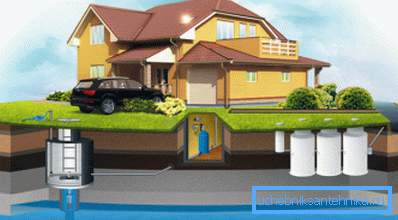
What you need to know about the device wells
Many private developers rely on drilling specialists in everything, believing that they know their business well and will offer the most optimal course of action. In most cases this is true, but the risk of running into the so-called hackers is not excluded.
The cost of work offered by them may attract with its cheapness in comparison with competitors, but it should raise suspicion and force them to study the issue on their own in order to understand what it is made of.
But before it is necessary to determine the type of well, the choice of place for it and the timing of the work.
When to drill a well
The cost of drilling does not depend on the time of year, so you can do it in winter and in summer. But many experts consider the best time to be autumn when the level of standing of groundwater is the lowest. However, this applies only to shallow wells "on the sand", but more on that below.
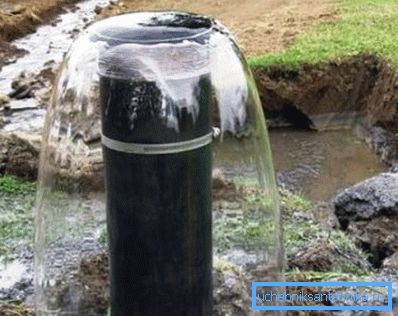
It is much more important to carry out drilling work until such time as improvement works begin on the site, since heavy machinery is used for them, which can destroy paths, platforms, and damage plantings.
Council Ideally, a well device is produced during the main construction. In this case, you do not have to worry about the integrity of already finished buildings, and to have your own water at a construction site is always more profitable than to carry it.
How to choose a place
If you decide to drill a water well before construction begins, you will definitely need a plan for future buildings and communication systems, a plan for landscaping.
In a word - the construction project. Because the choice of location depends not only on the results of geological surveys indicating the position of aquifers.
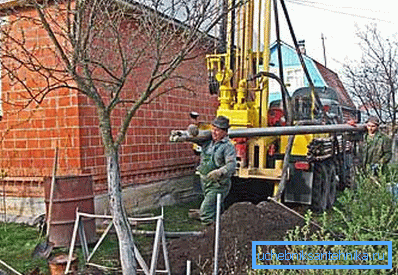
It is important that the following instructions are followed:
- The distance between the well and the residential building should be at least 3 meters;
- The distance to the sewer well or septic tank - at least 15 meters;
- It can not be placed in close proximity to roads and parking lots.
Types of wells for water
Water underground lies at different depths, in different geological formations. The nearest aquifer is located in sandy soil at a relatively shallow depth, usually not exceeding 20 meters. In most cases, it is possible to reach it without the use of complex and heavy drilling equipment, having drilled a hole with your own hands.
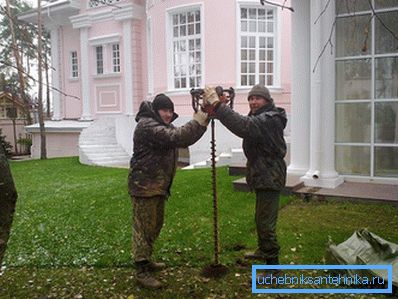
This will significantly reduce costs, but the extraction of water from sandy layers has several disadvantages.
- The well “on the sand” is poorly protected from surface water and pollution by it;
- The composition of water often contains harmful organic impurities, which requires its purification;
- The volume of incoming water is low and very unstable, depending on both the thickness of the layer and weather conditions;
- The presence of mechanical impurities (sand) does not allow the use of a well without a filter;
- Over time, especially when used irregularly, the filter becomes silted and requires cleaning;
- Small operational service life.
For reference. This kind of well is very common. For example, the cost of wells in the country should not be very high, if you are there only on weekends.
The main expense falls on irrigation and technical needs, for which water from the sandy layer is quite suitable. A drinking can bring with you or recruit from a nearby spring.
All of these deficiencies deprived artesian well supplying water from the deep limestone layers. It does not need filtering, it is distinguished by high and constant debit, it does not silt even in the case of irregular use and serves for several decades.
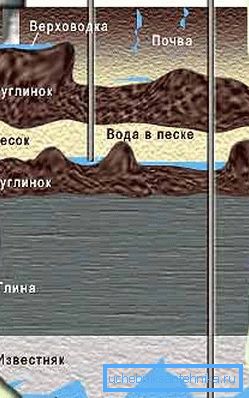
But the cost of drilling a well “to lime” is higher, since it is necessary to reach low-lying aquifers, the depth of which can in some cases reach 100-200 meters.
What is the cost
From the above, it is clear that the magnitude of the cost of water supply at home depends primarily on the depth of drilling. But this does not always mean that an artesian well will certainly be more expensive than a sand one, since in different places the depth of sand and limestone soils can vary greatly.
For reference. Sandy aquifers are located at a depth of 10-50m, calcareous - 20-250 m.
In addition, the final cost depends on many other factors.
Objective drilling conditions
So, to answer the question of how much it costs to dig a well, you can only have such objective data as:
- Drilling depth to aquifers;
- Geodetic features of the site;
- Type of soil to be opened;
- The design and type of future well;
- Selected drilling and casing technology, casing diameter.
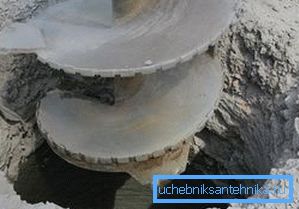
It often happens that getting to the water in the chosen place fails. To avoid this, it is recommended to do preliminary geodetic survey. These are also costs, and considerable, but they are not comparable with the costs of drilling several wells “in the blind”.
Council If your site is located on a flat terrain, and your neighbors already have wells, working at approximately the same depth, you can do without exploration. This already indicates the presence of a stable aquifer.
Calculating the cost per running meter
Traditionally, drilling organizations evaluate their services in relation to the number of meters passed to the aquifer. No one will tell you in advance how much it costs to make a well at the dacha - the final payment is made upon completion of work.
The cost of running meter consists of the following parameters:
- Directly the drilling process;
- Installation of casing;
- The price of casing and consumables used in your work is set in your region.
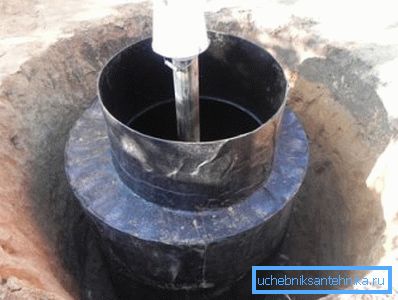
Delivery of equipment and tools to the place of work, pumping wells "to clean water", installation of filters and pumping equipment can be calculated separately or included in the cost of linear meter - at the discretion of the contractor.
For reference. The cost of the work does not include chemical examination of water to determine its quality and suitability for drinking. But it is desirable to make it regardless of the type of well, in order to determine the need for installation and the type of filtering equipment.
In the calculations there are many nuances. For example, the cost of delivery of equipment depends on the distance of travel and fuel consumption, the type of equipment itself, the availability of convenient access roads.
A drilling rig with a width of 2-3 meters will not be able to pass through the territory of the dacha settlement with its narrow roads and turn around on the site without damaging the landing and the buildings. A more compact and maneuverable equipment is more expensive.

It is also impossible to say how much a meter of drilling a well costs, if you do not know the composition of the soil - the complexity and speed of transmission depend on the rocks that form it. If we take very averaged data, then in the Moscow region this figure is equal to 1700-2200 rubles.
Why is an artesian well device more profitable than a sandy
As a rule, artesian water lies at a fairly large depth and, based on the completely inhuman price of drilling one linear meter of a well, it is certain that its production is too expensive.
But let's think and count.
- An artesian well will serve you at least 5 times longer than a sand one. Multiply the cost of the latter by 5 and compare the results. In this case, note that by the time of re-drilling the site will already be fully ennobled.
- In order to ensure the normal water flow and uninterrupted operation of a sand well, it must be periodically washed and cleaned of sand and silt from the filters. This is also money.
- The water from the artesian well is not polluted by surface water and therefore rarely needs to be filtered and disinfected - that is, it does not require additional costs for these activities.

- In dry years, water from the upper aquifers can go away, forcing you to look for other sources. This never happens with artesian water.
Of course, all these arguments have weight only in the case of the provision of water to a capital country house with a permanent residence or a farm. For the summer cottage well enough "on the sand." But be prepared for the fact that it will have to be washed every time at the beginning of the season.
Conclusion
For more useful information on this topic, watch the video in this article. But you can only get specific information about the cost of a well device only at the organization providing such services in your area.